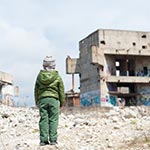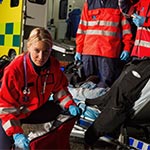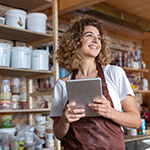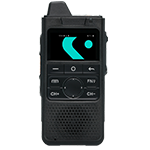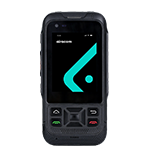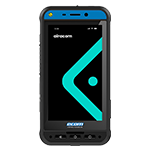ATEX Zones Explained
A complete guide to what are ATEX zones?
Helping you to understand ATEX zones and navigating potentially explosive atmospheres
ATEX (Atmosphères Explosibles) is a European directive that defines the minimum safety requirements for equipment and protective systems used in hazardous environments, where there is a risk of explosion. ATEX regulations divide hazardous environments into three zones, based on the likelihood and duration of an explosive atmosphere.
Critical comms in hazardous areas
Decoding ATEX zones: Ensuring safety in explosive environments
Navigating the complexities of hazardous environments is crucial for maintaining safety and compliance. ATEX, a European directive, plays a pivotal role in setting the standards for equipment and protective systems in areas prone to explosions. By understanding and adhering to ATEX regulations, industries can mitigate risks and ensure a safer working environment. Let’s delve into the ATEX zone definitions to gain a clearer understanding of these classifications and their implications for safety in explosive atmospheres.
Zone 0: An area where an explosive gas atmosphere is present continuously or for long periods.
Zone 1: An area where an explosive gas atmosphere is likely to occur in normal operation.
Zone 2: An area where an explosive gas atmosphere is not likely to occur in normal operation but may occur for short periods.
ATEX Zone Safety Requirements
Ensuring compliance: Safety requirements for ATEX zones
Ensuring the right safety measures and equipment are in place is critical in hazardous environments where the risk of explosion is present. ATEX zones help in categorizing these environments based on the level of risk, and each zone comes with specific safety requirements for equipment and protective systems. Adherence to these requirements is not just about compliance; it is about safeguarding lives and property. In this section, we will explore the safety requirements associated with each ATEX zone, providing clarity on how to maintain a secure and compliant operation in potentially explosive atmospheres.
Zone 0: Equipment used in Zone 0 must be intrinsically safe, meaning that the equipment is incapable of producing a spark or thermal effect that could ignite the explosive atmosphere. Ensuring that all devices and systems operate safely, even in the continuous presence of explosive gases, is a paramount priority.
Zone 1: Equipment used in Zone 1 must be explosion-proof, meaning that the equipment is capable of containing an explosion within itself and preventing the explosion from spreading to the surrounding atmosphere. This design ensures that even if an internal fault leads to an explosion, it will not compromise the safety of the entire area.
Zone 2: Equipment used in Zone 2 must be non-sparking, meaning that the equipment is designed to prevent the occurrence of sparks or hot surfaces that could ignite the explosive atmosphere. In these environments, where the risk of an explosive atmosphere is less likely and occurs only for short periods, precautions are still crucial to prevent potential ignition sources.
UC: Transforming Hazardous Workspaces
Dust hazardous
Dust can be just as hazardous as gas or vapour when it is suspended in the air and ignited. Dust explosions can occur in a wide range of industries, including agriculture, food processing, woodworking, chemicals, and pharmaceuticals.
ATEX is a European directive that defines the minimum safety requirements for equipment and protective systems used in hazardous environments, where there is a risk of explosion. ATEX zones are classified based on the likelihood and duration of an explosive atmosphere, and can also be classified based on the presence of dust.
Zone 20: An area where an explosive dust atmosphere is present continuously or for long periods.
Zone 21: An area where an explosive dust atmosphere is likely to occur in normal operation.
Zone 22: An area where an explosive dust atmosphere is not likely to occur in normal operation but may occur for short periods.
Streamlining Operations with UC
Dust hazards in the food processing industry
The food processing industry is particularly susceptible to dust hazards. Dust from grain, flour, and sugar can be explosive, and dust explosions can occur in a variety of locations within food processing plants, including silos, mills, and packaging areas. To reduce the risk of dust explosions in the food processing industry, it is important to:
Dust hazards are a serious concern in many industries. By understanding ATEX zones and the safety requirements for equipment used in dust-hazardous areas, businesses can help reduce the risk of dust explosions and protect their employees and facilities.
Keep dust accumulation to a minimum.
Use intrinsically safe or explosion-proof equipment.
Install dust collection systems to remove dust from the air.
Train employees on dust hazard awareness and prevention.
Airacom Secure Voice & Data
Airacom your hazardous area UC partner for industrial voice & data services
Airacom is a leading provider of intrinsically safe mobile devices and communication solutions for businesses that operate in hazardous environments. Airacom’s devices are designed to meet the highest safety standards and regulatory requirements, ensuring that workers can communicate safely and effectively in potentially explosive environments.
We offer a wide range of intrinsically safe devices, including rugged smartphones and tablets, as well as a variety of communication solutions, including push-to-talk (PTT) over cellular, satellite, and Wi-Fi networks, as well as unified communications solutions that enable workers to communicate through voice, video, and data.
Unpacking Unified Communications
The role of Unified Communications services
Unified communications (UC) integrate various forms of communication into a single, cohesive system. In hazardous areas, UC solutions must be specially designed and certified to ensure they do not become a source of ignition.
Unified comms in hazardous areas can improve overall operational efficiency by providing workers with the tools they need to perform their jobs effectively. This may include access to real-time data and analytics, collaborative tools for remote teamwork, and streamlined communication channels that allow for faster decision-making and problem-solving.
The Device Dilemma: Solved
Choosing the right devices
When selecting devices for hazardous areas, it is essential to look for certifications that guarantee their safety and compliance with industry standards. Look for devices labelled as “intrinsically safe” or “explosion-proof,” ensuring they have undergone rigorous testing and are safe to use in such environments.
Airacom’s intrinsically safe devices include rugged smartphones and tablets, designed to withstand the toughest conditions and provide reliable communication in hazardous areas. These devices are certified for use in hazardous locations, including ATEX and IECEx Zone 1, 2, 21, and 22 environments.
Explore our range of intrinsically safe smartphones
Looking beyond intrinsically safe phone cases? Seek a dedicated Android ATEX smartphone or mobile designed specifically for high-risk environments. Our selection includes Zone 1 and Zone 2 intrinsically safe smartphones, engineered with safety and performance in mind. Explore our range to find the ideal device that meets your specific hazardous location requirements.


























